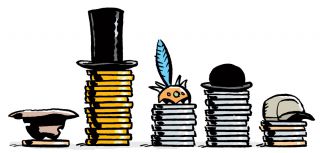Addressing the Challenge of Inequality

According to the latest data from the Central Statistics Office (CSO), there were just under 630,000 people still living in poverty in 2019, despite modest improvements in poverty rates. Of these, almost 200,000 are children Social Justice Ireland welcomed the improvements, which were achieved mostly through implementation of proposals we had made. However, the number, and rate, of people experiencing enforced deprivation has increased, with almost 900,000 people (300,000 children) being forced to go without basic necessities due to lack of affordability. When the financial crash of 2008 happened, there were 13,000 fewer people at risk of poverty in Ireland. The impact of a decade of unnecessary austerity, and policy decisions which undermined the Social Contract, has deepened the divide between those people, businesses and sectors who will survive this latest economic shock and those who will not.
As at the last week in January 2021, there were 657,076 people on the Live Register, 479,633 of which were on the Pandemic Unemployment Payment (PUP). That amounts to 25 per cent of the labour force (CSO, 2021b).
An article in the Journal of Income Distribution suggests that income inequality in Ireland has been decreasing since the 1980s, however it also points to the fact that the share of total (gross) income going to the top 1 per cent rose by 5.5 per cent. This percentage increase to the top 1 per cent was more than in Sweden, Finland or Germany, all of which have less inequality than Ireland when measured on the basis of the Gini coefficient[1].
To give a real sense of income inequality in Ireland, one only has to look at the economic impact of the pandemic. While more than one in every seven people in the State were living on welfare payments, the wealth of Ireland’s five richest people rose by €4.3 billion[2] in just one year. Income inequality and poverty are not just about money. They impact all other areas of our lives:
- The Covid-19 infection rates are 50 per cent or more higher in disadvantaged areas than in more affluent areas[3].
- Children and young people in disadvantaged areas have poorer health, lower levels of physical activity, poorer diets, and more emotional difficulties than their wealthier peers[4].
- Life expectancy is lower among disadvantaged groups than the national population and considerably lower than more affluent populations.
- Children in disadvantaged areas have poorer scores on standardised tests compared to their wealthier peers.
- Even with almost half a million people on the PUP, income tax receipts increased by 3.9 per cent in January 2021, compared to January 2020, indicating that it was the very lowest paid who suffered the most.
- Tenants in the private rented sector are more likely to be paying a higher proportion of their income in housing costs, experience deprivation and have less wealth than owner occupiers.
Policymakers must acknowledge that a thriving economy is not a goal in itself but a means to social development and wellbeing for all. Substantial evidence has emerged in recent decades to support the view that economies and societies perform better across a number of different metrics, from better health to lower crime rates, where there is less inequality[5].
[1] Inequality - Income inequality - OECD Data
[2] Author’s calculations on comparison between the 2020 list - Forbes Billionaires 2020 and the Real Time Billionaires list as of 06th February 2021 Real Time Billionaires (forbes.com)
[3] Author’s calculations based on Ireland's COVID19 Data Hub (arcgis.com)
[4] Growing Up in Ireland, various years - Growing Up in Ireland – National Longitudinal Study of Children
[5] Wilkinson, R., & Pickett, K. (2009). The Spirit Level: Why More Equal Societies Almost Always do Better. London: Penguin.